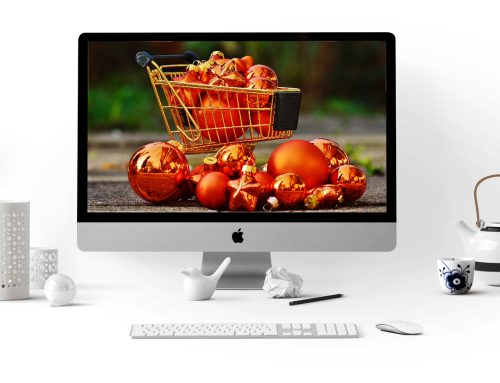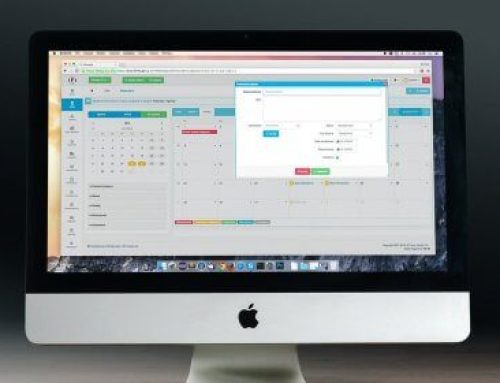Welche Phasen die Produktion einer 3D Animation umfasst.
Der Produktionsablauf eines 3D-Animationsvideos gliedert sich im Wesentlichen in drei Phasen: Vorproduktion, Produktion und Postproduktion. In diesem Artikel werden wir detailliert auf jede Phase eingehen.
Vor der Produktion.
Die wichtigste Etappe der 3D-Animation ist die Vorproduktion. In dieser Phase werden die Hauptaspekte der 3D-Animation definiert, deren wichtigstes Element das Storyboard ist.
Storyboard
Das Storyboard hilft eine visuelle Folge über die erzählende Geschichte zu erstellen und ist für den erfolgreichen Animationsprozess unentbehrlich. Die Keyframes werden hintereinander von Hand gezeichnet, um die Schlüsselbegriffe Geschichte und Szenografie hervorzuheben. Einige kurze Texte helfen dabei, einige Aspekte zu klären, die nicht gezeichnet werden können, wie z. B. Kammerbewegungen.
Das Storyboard ist ein grundlegendes Dokument für das Arbeitsteam, aber auch für den Kunden, der sofort nachvollziehen kann, ob die Botschaft ankommt also die Story effektiv ist oder noch Anpassungen notwendig sind.
Modelle entwerfen
Um das Aussehen von 3D-Modellen zu definieren, ist es notwendig, eine Reihe von Illustrationen oder Skizzen zu erstellen, in denen alle möglichen Positionen oder Ausdrücke dargestellt werden, die ein Charakter während der Animation annehmen kann. Die Skizzen definieren nicht nur das Aussehen eines Charakters, sondern auch die Art der Kleidung und Accessoires.
Die Produktion
Nach der Freigabe des Storyboards geht das Projekt nun in die Produktionsphase. Hier beginnt die Ausführungsphase der Arbeit, in der Designer und Animatoren aufbauend auf die Vorproduktionsphase 3D-Charaktere und Umgebungen erstellen.
3D Modellierung
In enger Zusammenarbeit mit dem Art Director setzen erfahrene 3D-Modellierer 2D-Skizzen in solide 3D-Modelle um. Zu diesem Zeitpunkt muss jedes kleine Detail in Polygone umgewandelt werden, wobei die Dichte je nach Genauigkeit des Modells variieren muss. Nach der Freigabe kann das 3D-Modell die nächsten Schritte des Texturierens und Takelage durchlaufen.
Texturieren
Künstler sind für die Erstellung von Texturen und Materialien verantwortlich, die dem 3D-Modell das endgültige Aussehen verleihen. Die Texturen der Charaktere oder komplexen Modelle werden in Form von Image Maps entwickelt, um jedes Detail des 3D-Modells exakt abzudecken. Für eine gelungene 3D-Animation spielen Materialien eine entscheidende Rolle, da sie das Erscheinungsbild des realen Materials nachbilden müssen.
Beleuchtung
Der Lichtmanager ist verantwortlich für die Positionierung und Definition der Beleuchtungseigenschaften, definiert das Zusammenspiel mit verschiedenen Materialien und berechnet die Intensität der Schatten, um eine 3D-Szene glaubwürdig zu machen. Letztendlich verleiht die Beleuchtung der Szene die Harmonie der Farben und die Wärme, die für die richtige Darstellung notwendig ist.
Takelage
Takelage sind die Begriffe, die verwendet werden, um die Bewegungen mechanischer Objekte zu definieren. Die Techniker, die sich mit dieser Phase beschäftigen, haben die Aufgabe, alle Positionen zu zeigen, die ein Charakter während der Animation einnehmen kann und eventuell Grenzen und Einschränkungen zu setzen, um die Bewegung glaubwürdig und natürlich zu machen.
3D Animation
In dieser Phase geben die Animatoren den Objekten und Charakteren die im Storyboard beschriebene Bewegung. Die Technik zur Animation von 3D Objekten unterscheidet sich nicht stark von der für 2D Objekte. Um die Animation von Charakteren so glaubwürdig wie möglich gestalten zu können wird häufig auf Motion Capture zurückgegriffen. Diese Technik wird verwendet, um die Bewegung von realen Schauspielern zu visualisieren.
Rendering
Nach Abschluss der Animationsphase geht das Projekt in die Rendering-Phase über. Dieser Name gibt die mathematische Berechnung an, die Computerprozessoren durchführen müssen, um die Frames in der erforderlichen Qualität zu exportieren.
Nach der Produktion
In der letzten Phase des Produktionsprozesses wird der 3D Animation durch Video-Audiobearbeitungen und den Einsatz von Spezialeffekten der letzte Schliff gegeben.
Spezial-Effekte
Einige Szenen erfordern spezielle Effekte wie Regen, Schnee, Explosionen oder Rauch. Diese Effekte können in der Postproduktion durch spezielle Software mit Hilfe von Partikelanimationstechniken erzeugt werden, die in der Lage sind, die Bewegung von kleinen Partikeln, die der Schwerkraft und anderen physikalischen Kräften wie Wind, Wirbel, Gewicht, Reibung usw. ausgesetzt sind, realistisch zu simulieren.
Audiovisuelle Bearbeitung
Bei der Audio-Video-Bearbeitung werden die während der Rendering-Phase erzeugten Clips zusammengefügt, die unnötigen Teile ausgeschnitten, die Übergangseffekte zwischen den Szenen angewandt, Spezialeffekte angewendet und alles mit dem Audio aus Hintergrundmusik und der Stimme der Charaktere (falls vorhanden) synchronisiert.


